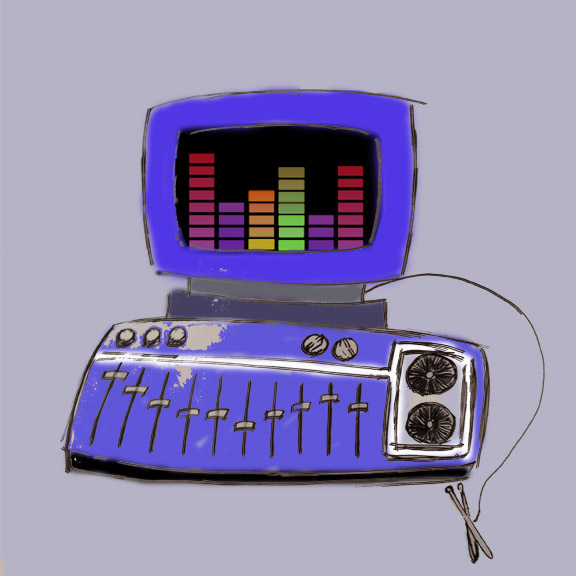It has been described by Stanford students as everything from a Spanish mansion to a Gothic fortress and even a haunted castle, but these misconceptions strike far from the truth.
Perched on top of a hill behind Florence Moore Hall, this mysterious Stanford landmark is none other than the Knoll, currently home to Stanford’s Center for Computer Research in Music and Acoustics(CCRMA, pronounced “karma”).

Designed by architect Louis Christian Mullgardt in the 1910s, the Knoll was originally intended to be the residence of Stanford President Ray Lyman Wilbur. In 1946, the Knoll became home to the Stanford Department of Music and in 1986, CCRMA moved to the location.
CCRMA was founded in 1975 by John Chowning, a Stanford professor, researcher, musician and inventor. Originally located at the Stanford Artificial Intelligence Laboratory on East Campus, CCRMA was founded as a research center for digital audio and computer-based technology.
In 1989, the Knoll was damaged in the Loma Prieta earthquake, rendering the third floor unsafe. As a result, the Knoll underwent a major renovation between 2004 and 2005.
Following the renovation, the Knoll now contains modern sound studios and open-plan work spaces. Among the updated rooms are a 100-seat performance hall for contemporary music performances and a listening room that allows for individuals to conduct research in synthetic acoustical space.
CCRMA is composed of academic directors, professors and engineers, but the majority of CCRMA affiliates are students, both graduate and undergraduate.
“CCRMA is strongly interdisciplinary, where physicists, electrical engineers, musicians and artists can come together in one spot to cross boundaries,” said Chris Carlson M.A. <\#213>12. “For example, musicians are learning to code and engineers are learning composition.”
“There is usually some strange sound coming from part of the [building] and students hacking away at code, but there is a happy exhaustion,” Carlson said, describing the Knoll environment on most evenings.
Although the Knoll’s atmosphere is very much research-oriented, there is a strong sense of community that allows for collaboration on a variety of projects.
“Everyone takes a multidisciplinary approach to their work and projects so everyone knows everything about everything,” said Jennifer Hsu M.A. ’13. “This multidisciplinary approach also forces you to talk to other people to learn, so there’s this great, warm community here.”
The wide range of ongoing research at CCRMA centers on the idea of approaching the intersection of music, technology and art from various angles. Researchers conduct work in sound synthesis, human computer interaction, environmental sounds, music cognition and sonification, just to name a few topics.
One current project seeks to recreate the audio experience of the Hagia Sophia, a mosque and museum in Istanbul with very distinctive acoustics due to its unique domed ceiling. Another project focuses on using audio illusions and computerized music to learn more about the human sense of hearing. Other researchers are working with dual electroencephalograms (EEGs) and monitoring the brain activity of two musicians as they perform, or two people as one performs and the other listens.
“CCRMA always attracts a phenomenal mix of people with diverse interest in arts and engineering,” said Chris Chafe D.M.A. ’83, CCRMA director. “It’s a playground with opportunity and new faces.”
Chafe extends an open invitation to all interested in any of CCRMA’s courses, research groups or interdisciplinary projects, as students have historically always been highly involved and engaged with the organization’s research.
Over the past few years, there have been significant research trends at CCRMA.
“In the past, people came specifically to study something specific like audio signal processing,” said Luke Dahl M.A. ’07 Ph.D. ’13. “There has been a shift to more creative and interdisciplinary projects.”
In addition to the increased interest in interdisciplinary research, CCRMA has also increased in popularity.
“People have been asking more and more about music and CCRMA in the past three to four years, especially in the undergraduate community,” said Steve Henderson ’08 M.A. ’12, who has been working at CCRMA since his time as an undergraduate. “I’m frequently asked, ‘What do I have to do to get in there?’”
Aside from academic contributions, the center holds frequent events and activities, on subjects from neurocognition and perceptual audio to the physics of music, digital signal processing, audio engineering, music production and computer science.
The Knoll’s auditorium, with equipment such as a state-of-the-art surround sound system, a grand piano and a multi-screen video projection system, is also home to many concerts, often featuring computer music composed by students and faculty. The outdoor space behind the building also hosts musical events.
In addition, the center holds its annual concert, Modulations, each April in San Francisco, showcasing leading electronic musicians, dancers and sound installations from both guest and CCRMA artists.
However, the core focus of the center remains its research projects. In ten years, Chafe predicts a greater emphasis on mobile and biological computing with an even greater focus on interdisciplinary projects.
“It’s going to be fun,” he said.
